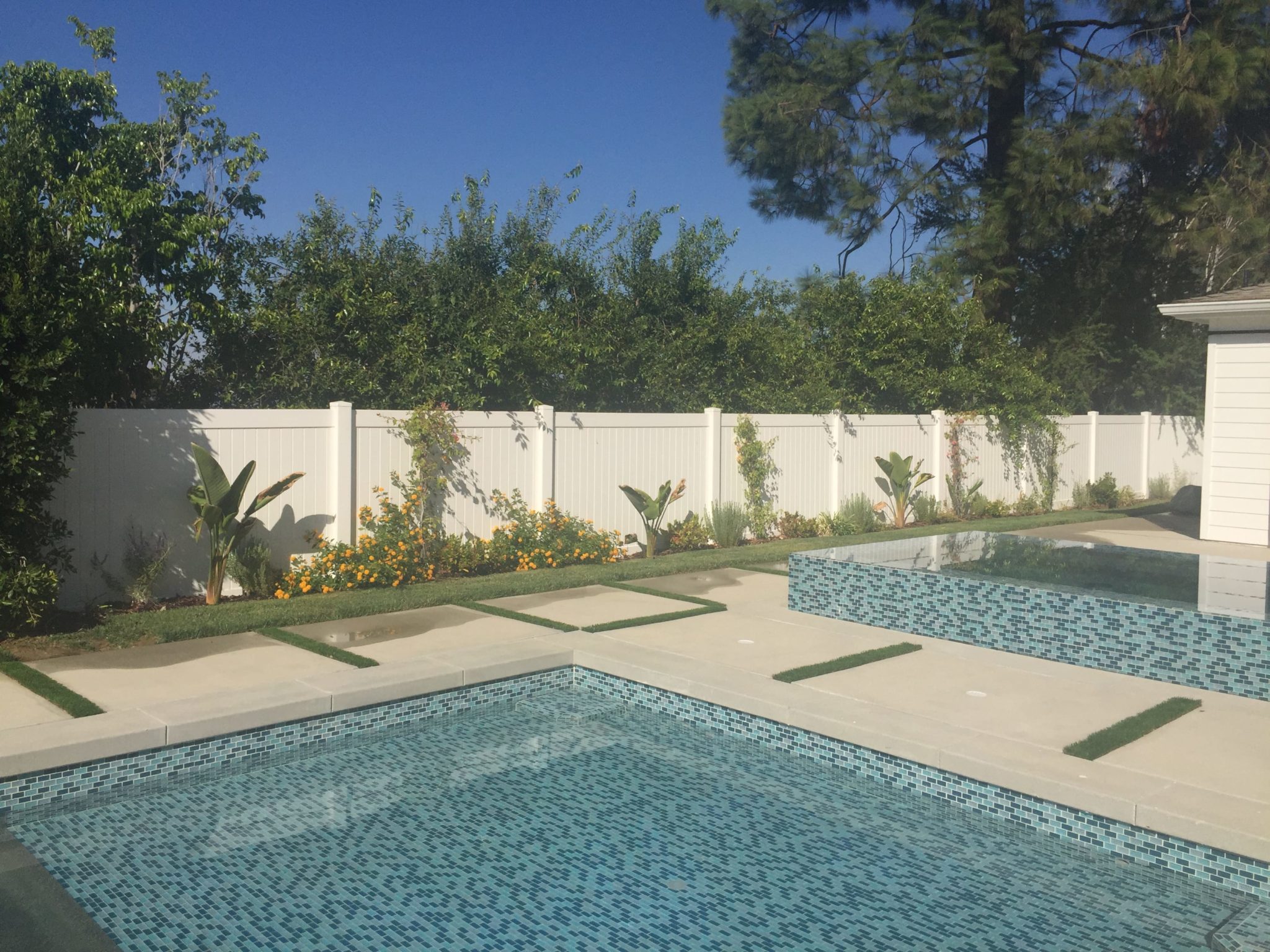Why Choose Vinyl for Your Pool Safety Fence?
When investing in a pool enclosure, homeowners weigh factors like appearance, durability, and compliance. Vinyl fencing consistently emerges as a top performer, combining structural reliability with effortless style.
Durability Against Pool Chemicals and Weather
Pools expose fences to constant stress — chlorinated water, UV rays, and humidity can degrade inferior materials quickly.
Vinyl withstands these conditions with ease:
- Chemical resistance: Unlike wood or metal, vinyl doesn’t corrode or fade due to chlorine or saltwater exposure.
- UV stability: Advanced co-extrusion techniques protect against cracking and yellowing.
- All-weather performance: Vinyl maintains strength in extreme heat, cold, or humidity.
Comparison Snapshot:
| Material | Chemical Resistance | Maintenance | Lifespan |
|---|---|---|---|
| Wood | Poor | High | 10–15 years |
| Aluminum | Moderate | Low | 20–25 years |
| Vinyl | Excellent | Very Low | 30+ years |
Low Maintenance Benefits
A vinyl pool barrier offers true convenience — forget sanding, painting, or sealing every season.
- Just a soap-and-water rinse keeps it new.
- Mold-resistance minimizes staining from damp environments.
- Over a decade, vinyl’s minimal upkeep yields significant cost savings versus periodic refinishing on metal or wood fences.
Aesthetic Versatility
Vinyl’s advanced manufacturing allows endless design flexibility:
- Choose between semi-private, picket, or solid panels to balance privacy and openness.
- Customize colors like crisp white, soft almond, or even wood-grain textures.
- Mix decorative top rails and lattice for added appeal.
The result? A non-climbable fence that enhances swimming pool safety without compromising style.
Pool Vinyl Fence Installation Process: What to Expect
Understanding the process behind your pool vinyl fence installation helps set realistic expectations and ensures smooth project execution.
Initial Consultation and Design Phase
Every great project starts with insight. A professional installer will:
- Evaluate your pool area, measuring slope, utilities, and property lines.
- Recommend designs that balance beauty and safety.
- Ensure gate placement follows local safety codes (self-closing, self-latching).
During this stage, you'll also receive visual mockups or 3D renderings to select materials and finishes.
Permitting and Code Compliance
Most jurisdictions require permits for pool fencing. Expert installers help by:
- Submitting permit applications.
- Confirming compliance with local pool enclosure regulations (height, spacing, and latch location).
- Addressing HOA restrictions if applicable.
Pro tip: A code-compliant fencing system not only avoids penalties but also protects against liability.
Installation Day: Setting Posts, Panels, and Gates
Professional teams follow a step-by-step process:
- Mark & Dig Post Holes: Using property stakes and line levels.
- Set the Posts: In concrete for maximum stability.
- Attach Fence Panels: Ensuring level alignment for aesthetics.
- Install Safety Gates: Outward-swinging with self-closing, childproof latch mechanisms.
Expect your installation to take 1–3 days, depending on fence length and terrain.
Final Inspections and Safety Features
Before completion, a certified inspector verifies:
- Minimum fence height (usually 48 inches or more).
- No more than a 4-inch gap between slats.
- Gate latch safety mechanisms function properly.
Once approved, your poolside fencing is ready for decades of reliable water area protection.
Understanding Pool Fence Regulations and Safety Codes
Each region enforces strict pool safety fence standards, typically based on International Residential Code (IRC) or state equivalents:
- Height: At least 48” (some states require 54”).
- Non-Climbable design: No horizontal elements children could use as footholds.
- Gate Function: Self-closing, self-latching, with latches 54” above ground.
- Distance from waterline: Usually within 20–30 inches of the pool edge.
Compliance ensures peace of mind — and keeps your backyard legally protected.
Cost Breakdown: What Influences Vinyl Pool Fence Pricing?
Average Cost Range: $5,000 – $12,000
Key factors affecting total price:
- Fence height & style – Decorative or privacy panels cost more.
- Layout complexity – Curves, slopes, or multiple gate entries increase labor.
- Material grade – Higher-end UV-resistant vinyl lasts longer.
- Permitting & inspection fees – Vary by municipality.
- Labor rates – Regional differences can shift total estimates by 15–25%.
Pro Tip: Always request itemized quotes for transparent comparison between installers.

